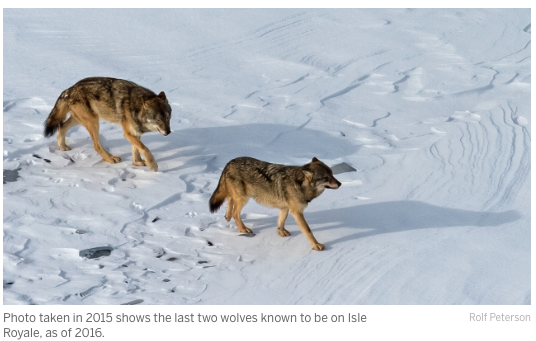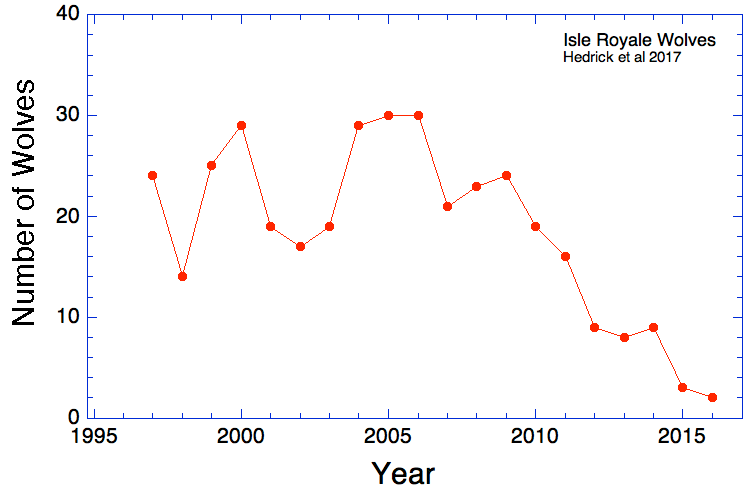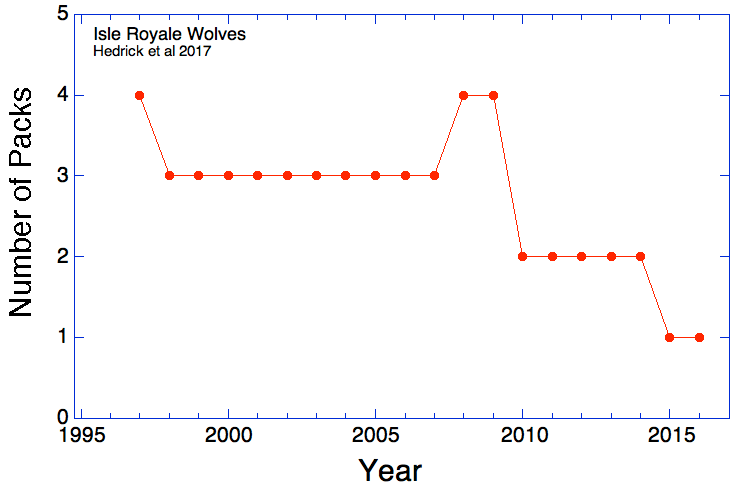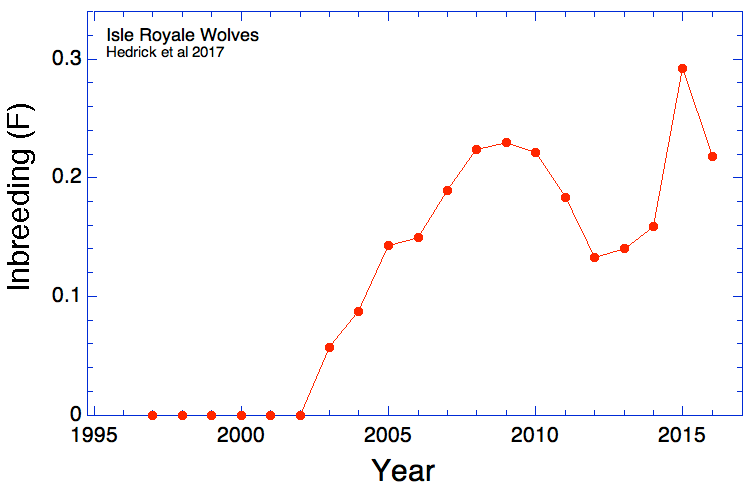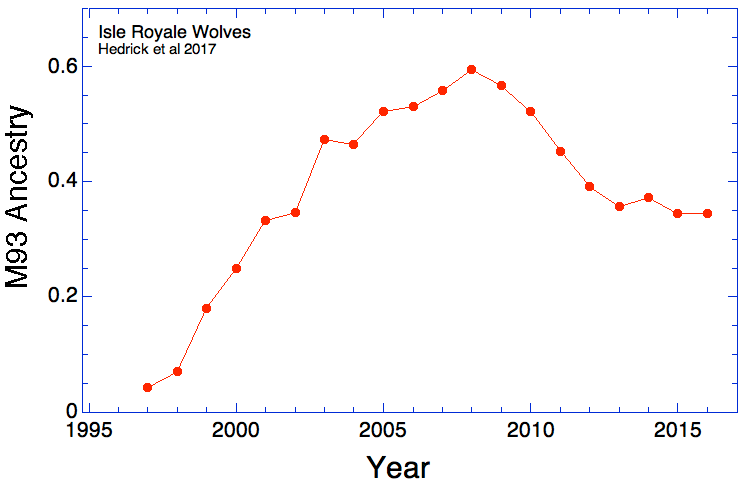A hard winter in 1996 took a heavy toll on the moose population, which collapsed to only 500 animals. This reduced the available food for the wolf population that was still trying to recover from low numbers.
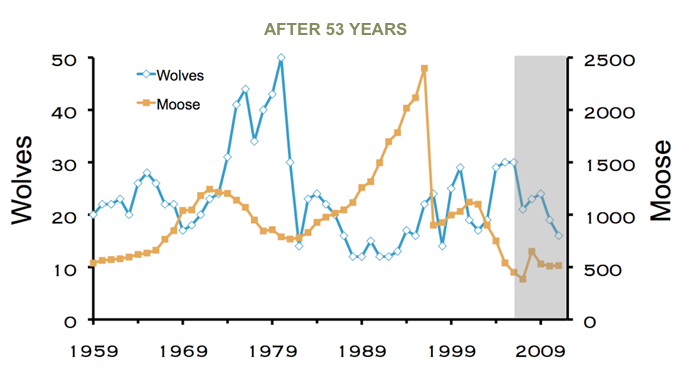 http://www.isleroyalewolf.org/overview/overview/at_a_glance.html
http://www.isleroyalewolf.org/overview/overview/at_a_glance.html Nothing about the Isle Royale wolf story is a surprise. Inbreeding and loss of genetic diversity reduce the ability of a population to tolerate changes in environmental conditions, disease, fluctuating food supply, and the many other random events that can affect survival in the wild. Eventually, animals in closed, isolated populations go extinct.
We are inadvertently repeating this experiment, now with a captive population of purebred dogs. How high can the level of inbreeding go before a breed simply goes extinct? Do we really want to find out?
Hedrick PW, M Kardos, R Peterson, & JA Vucetich. 2017. Genomic variation of inbreeding and ancestry in the remaining two Isle Royale wolves. J Heredity (in press).
ICB's online courses
*******************
Join our Facebook Group
ICB Breeding for the Future
...the science of dog breeding
*******************
Visit our Facebook Page
ICB Institute of Canine Biology
...the latest canine news and research
